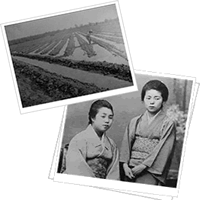The Kishi Farm: Japanese Immigrants to Texas
In Orange County, the plentiful water provided by the Sabine River, the Neches River, and the Adams Bayou combined with rich soil contributed to rice becoming a cash crop at the turn of the century. By 1900, with water canals to irrigate the expanding number of rice fields, 1,017,934 pounds of rice were produced in Orange County. By 1940, production was 24,217,704 pounds of rice. Following the end of World War II, shifting market demands slowly eliminated the rice farms in Orange County. The population boom Texas experienced made the land used by rice farming desirable real-estate, and housing developments eventually occupied much of the area previously used for rice farming.
Thirty-two Japanese immigrants moved to Texas during the dawn of the twentieth century, establishing three distinct settlements. One such settlement was funded by Kichimatsu Kishi, a Japanese businessman and veteran of the 1905 Russo-Sino war, who wanted new opportunities and land of his own. In 1907, committing his own wealth supplemented by large loans, Kichimatsu moved several other Japanese families to the Terry area of Orange County and established the Kishi Rice Farm on his newly purchased land. The Japanese-American settlers built homes, a church, and a school on the Kishi Rice Farm. The colony was successful until the economic downturn of the 1920s. Despite the farm's diversification into oil shift to truck farming, the properties suffered foreclosure during the Great Depression. Despite these efforts, the farm was foreclosed during the Great Depression. Many families stayed in the area and a few members even fought in World War II for America despite harsh treatment of Japanese-Americans by the Franklin D. Roosevelt Administration.

